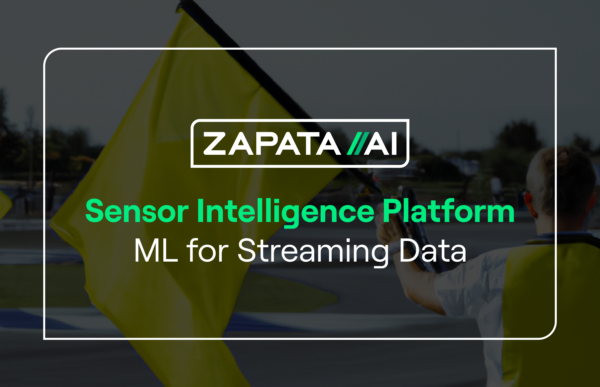Quantum Computing for Sustainability: A Practical Guide

Quantum Computing for Sustainability: A Practical Guide

In our last blog post, we explored a few promising use cases where quantum computing could help us build a more sustainable future — and the challenges standing in the way. If you haven’t already read it, it’s worth a read. Here, I will explore some practical considerations and the most impactful areas where we can devote our efforts in the near-term to advance quantum-enabled solutions to the climate crisis.
To recap, quantum computers will eventually deliver unfathomable computational power for solving certain classes of complex problems — there is little doubt about this. However, there’s still a lot of uncertainty, especially around use cases related to sustainability. It’s hard to quantify what impact quantum computing could have within, say, 10 years — when the most urgent action to avert climate change will need to take place.
So, what should we do about it? As quantum computing researchers and engineers, and as enterprises that want to use quantum computing to advance their ESG goals? There are three main types of useful actions in this context:
If we can identify and remove certain bottlenecks, we can make quantum useful sooner. It’s not always clear where these bottlenecks exist. But finding them can inform which research direction would be the most impactful.
However, finding bottlenecks is a hard task in itself. Zapata is participating in the DARPA Quantum Benchmarking program, where we are using Orquestra® to build resource estimation tools with our partners and customers. In order to estimate the resource requirements for a given sustainability application, you need to know what parts of the solution will be the most resource intensive — in other words, the bottlenecks.
A common problem is that most people only think about their own slice of the engineering stack, but you need a more holistic view to appreciate where the bottlenecks might be. This work has given us a fresh perspective on problems like scaling up resources and has put us in a position to collaborate with other experts to solve them.
Therefore, if you’re in a position to work on a project that might uncover some bottlenecks (e.g., benchmarking or a big project focused on integrating all the parts of the stack), or well qualified to help to solve some known bottlenecks, this might be the most effective way for you to help. We need people working with the entire stack from method to metal and then also at industrial scale.
In order to estimate the resource requirements for a given sustainability application, you need to know what parts of the solution will be the most resource intensive — in other words, the bottlenecks.
In order to make quantum useful for sustainability, we need to identify the most viable use-cases first. Some important considerations include their utility and practicality, the level of accuracy or speedup would be needed to gain an advantage over existing solutions, and the resources that would be needed to achieve that advantage.
This path can be somewhat tedious. Sometimes in this process we will discover that the use case we initially thought of as great turns out to be impractical. However, the fact that something doesn’t work is still a valuable scientific result, and I encourage everyone to publish such results. This might save others time of following the same path or make it easier to revisit them in future.
On top of that, there may be a lot of fine-tuning required to adapt widely used methods for your specific problem. The corollary of this point is that by exploring the details of a very specific problem, one might find certain shortcuts that will make solving the general problem much more feasible. This, however, would not be possible without a very deep dive.
By exploring the details of a very specific problem, one might find certain shortcuts that will make solving the general problem much more feasible.
Time is an essential factor when it comes to mitigating climate change related risks and damage. Therefore, anything we can do to make solutions a reality sooner will help.
It’s true that it’s hard to predict how long it will take for quantum computers to solve important problems. But if we postpone thinking about integration and implementation within an enterprise IT stack until the technology is here, it will take us several more years to use it in practice.
It might seem silly to spend months solving a problem on a sample of real data using an actual quantum computer when you could solve the same problem on your laptop in minutes. But the real reason to do this is to have all the infrastructure in place and discover the unexpected nuances of applying quantum to a particular domain.
In the big picture of scientific progress, a few years of delay might be inconsequential. However, if we look at the timelines related to the climate crisis, it might be crucial. The climate crisis is perhaps the grandest systems problem of our time, and we need to start putting elements of the solution in place ASAP to build other elements in the system.
It’s hard to predict how long it will take for quantum computers to solve important problems. But if we postpone thinking about integration and implementation within an enterprise IT stack until the technology is here, it will take us several more years to use it in practice.
At Zapata, we’ve always been more interested in the actual impact of quantum computing, rather than the theoretical impact. Not to belabor the point, but none of the use cases mentioned in my previous post will be easy to implement, especially not on today’s noisy intermediate-scale quantum (NISQ) devices. But even with more powerful quantum computers, it’s not enough to have a solution in the lab. To make a difference, these sustainability applications will need to be widely implemented at enterprise scale.
Fortunately, implementing quantum applications at enterprise scale is what we do best. Below are some practical implementation considerations that we’ve learned from years of work with enterprise customers (For a more detailed guide to becoming quantum-ready, see this blog post).
Quantum computing companies obviously have an inherent interest in using quantum computers to solve problems. Other companies might also want to do a project with quantum simply because it’s an exciting new technology. However, sometimes a quick analysis can reveal that using quantum doesn’t make sense in a particular context. More often than not, a classical computer gets the job done just fine.
It’s also important to analyze the resources required for your algorithm to do something useful. We did that in our collaboration with BP and learned that for some molecules we were interested in, getting a single energy estimate could take days (and in practice you need hundreds if not thousands of them). This experience gave us a more realistic sense of which families of problems could be solved in the near term at an industrial scale, but it also allowed us to find important bottlenecks that most people in the quantum community didn’t know about at the time.
Bombastic claims might help you gain traction in the short term, but the quantum crowd is increasingly skeptical. There are companies that made too many exorbitant claims and their reputation suffered in the long term, which now hurts them, for example, when it comes to recruiting.
Sometimes a quick analysis can reveal that using quantum doesn’t make sense in a particular context. More often than not, a classical computer gets the job done just fine.
As I mentioned earlier, an effective team will require a combination of domain specialists and quantum experts. Domain specialists are the ones who know what parts of the business can be improved, and where the existing computational bottlenecks are. On the other hand, quantum experts can help map enterprise-level problems onto quantum device, leveraging the latest advances in quantum hardware and algorithms. External consultants may be useful here, bringing experience from working on similar problems with other organizations.
In the context of sustainability, a team should also include sustainability expert who can assess the environmental impact of the project across its life cycle.
A life cycle analysis is a widely deployed methodology for assessing the environmental impacts associated with the entire life cycle of a commercial product, process or service. Naturally, this is a process you’ll want to undergo when assessing the environmental impact of any quantum application.
One potentially unintended consequence is that the complex computations where quantum computing can add value are extremely energy intensive. So it’s important to assess whether emissions generated by quantum computing — and the classical computing infrastructure that supports it — will outweigh emissions saved by the outcome of those calculations. Libraries like CodeCarbon can track the emissions generated by classical computing to help assess whether quantum applications will have a meaningful impact on net emissions.
On the other hand, the long-term picture offers cause for optimism. In the future, more advanced quantum computers or could dramatically reduce energy costs associated with computing by reducing both the time and power required for complex computations. Even today, tensor networks, a quantum-inspired technique, can compress the size of computational models and reduce their costs and carbon footprint. Some estimates suggest quantum computing could reduce energy usage by one million kilowatt hours. Quantum computers may not only find better solutions faster, but could also use less energy to obtain comparable solutions (this paper offers a great example).
Quantum computers may not only find better solutions faster, but could also use less energy to obtain comparable solutions.
Increasingly, it’s not only the climate that’s on the line, but also the reputation of your brand and the satisfaction of your employees and other stakeholders. With their future at stake, younger employees in particular will be paying close attention to your organization’s commitment to sustainability.
From a reputational perspective, successfully using quantum to attempt to reduce emissions could be great for PR. But it could also backfire and be met with accusations of greenwashing. Ultimately, sustainable applications of quantum computing will be viewed in the context of an organization’s total environmental impact. You run the risk of being perceived as insincere if you’re not taking action to reduce emissions elsewhere.
In addition, not everything needs to be about sustainability. Oftentimes, PR around new research comes with idealistic claims that the findings can be applied for sustainability, when in reality the connection is a stretch at best. Sometimes the argument is far-fetched and too general, or the research applies to many domains and sustainability is not really the top application. This is another mild form of greenwashing.
Ultimately, sustainable applications of quantum computing will be viewed in the context of an organization’s total environmental impact.
I said this at the beginning of the first post, but it bears repeating: quantum computing will only be one of many solutions to the climate crisis. Solving the crisis will require action at almost every level of society, from governments to enterprises to individual people. The goal of this post is not to convince anyone otherwise. It is to tell you our view on the topic.
I also want to stress that this won’t be easy. If you really want to make an impact, you need to make a sobering assessment of the complexities involved and create a realistic plan to integrate quantum computing into your enterprise processes. Identify near-term use cases, develop your infrastructure, build your team, and be clear-eyed about the potential results.
We’re certainly open for discussion: get in touch if you want to collaborate or if you think we got something wrong. We have the quantum expertise and the will to solve these critical global problems. And if you’re already working on climate-related research or initiative, we would absolutely appreciate your experience to help us analyze the impact of our projects and to cross-pollinate ideas for potential quantum solutions.
Michał Stęchły, Quantum Software Engineer
Many thanks to Nicolas Sawaya at Intel for his careful feedback on the draft of this blog post.
Q4Climate: Research initiative to unify researchers in quantum and climate sciences.
PushQuantum: Educational resources for developing a career in quantum.
QED-C: Quantum Economic Development Consortium


